Friendly Dictators Trading Cards (1989) #1 by Dennis Bernstein, Laura Sydell and Bill Sienkiewicz.
After the disappointing Iran-Contra Scandal “trading” cards, I was leery about this Eclipse publishing initiative. But, hey, this has artwork by Bill Sienkiewicz, so how bad can it be?
As with that first collection of cards, this is also 36 cards in a cardboard box. The authors describe the concept here: It’s a collection of er not-very-good leaders that the US has supported (and often instated) in countries all over the world. (And it’s not a collection of all bad leaders in the world; just the US-supported ones, so we don’t get cards about Mao or Stalin.)
The artwork for all the cards is by Bill Sienkiewicz, who had already been involved with many of the other political comics published by Eclipse (most famously Brought To Life, but also Real War Stories).
Each Iran-Contra card was focused on a single person and how he (99% men) related to the scandal. These cards take a much wider view: They do talk some about the personal failings of the dictator in question (like, er, rape and torture and stuff), but they also give a very brief history of the history of the country the asshole was fucking over.
The Iran-Contra cards were probably meant to be read sequentially, but these cards are totally non-sequential, and references are to higher-numbered cards as often as to lower-numbered ones.
They’re much better written than the first collection. It’s written in a kinda of lively, but reasonable voice: It doesn’t shy away from displaying outrage, but it’s far, far from being a continuous rant. This makes reading this paradoxically pleasant: It stokes you into a simmering anger.
But let’s look at some of the artwork. Most of the cards are quite faithful renderings of photographs, I would guess. But sent through the Sienkiewiczer.
Others are more fanciful, like this Papa/Baby Doc pair. This card references the text more directly than most: Papa Doc rewrote a Christian prayer to reference himself.
Here we apparently have the ouster of Stroessner depicted instead of the dictator himself?
And here we have Pinochet doing a jig on Allende’s grave. I wonder whether the writers gave him any pointers or whether Sienkiewicz came up with this stuff on his own.
“Democracy’s the breeding ground of communism.”
The first sixteen cards are all about South and Latin America. I was starting to wonder whether we wouldn’t move out of the Americas at all, but the last sixteen cards are from all over the world, which is a relief.
And we even get some people that I had forgotten all about, like Sitiveni Rabuka in Fiji in 1987 (which was the most recent CIA-led coup at the time, I think).
U.S. Denies CIA Involvement in Fiji Coup. *gasp* Then I guess this is gross misinformation! The CIA would never lie to the public.
Hm… I just googled. This one it seems like the CIA hasn’t admitted being in on yet. I guess the statute of limitations may not have expired for everybody involved yet?
Here’s Rich Kreiner, writing in 1993 in The Comics Journal 155:
The individual cards are a suitable vehicle for the individual profiles. Unfortunately, word limitations have complicated these indictments, making them overly concise and uneven. petty crimes are mixed with heinous atrocities. Drama is crosscut by details (though sometimes quite fascinating detail: Zaire’s Mobutu “is perhaps the only world leader who could pay his national debt from his own bank account. “). The recitation of offenses is relentless, card after card after card. We lose the ability to focus on the individual monsters and instead mourn for whole countries. In the end, we are forced to consider the evil detailed here as intrinsic and fundamental to human nature.
Luckily the art argues effectively against this depressing generalized conclusion. Bill Sienkiewicz reveals that these dictators are actually beasts that pass for humans only by genetic technicality. To this end, Sienkiewicz unleashes his full array of graphic style, giving us an assortment of mediums and looks: cartoon, caricature, selective realism, ornamentation, simplification, rhetoric, narration, propaganda, subtlety, low humor, and genious distortion, Sienkiewicz’s work here is not as powerful as the political art he created with author Alan Moore in the Brought to light graphic novel. These distinct cards, lacking narrative unity, dramatic flow, and Moore’s prose, do not provide as devastating an impact.
Still, many Of the portraits are inspired: the golden glow of the charismatically handsome Alfredo Cristiani of El Salvador, the vaporous head of South Africa’s Botha, the eerie luminescence of Mobutu. As he has evolved as an artist, Sienkiewicz has come to rely less and less on comic art conventions, less and less on the medium’s graphic shorthand; everything seems freshly invented in longhand. The set has its share of clinkers — mostly those which belabor facile associations — yet the relish with which Sienkiewicz attacks his material is exciting and invigorating.
They appear to be pretty popular:
“[my ex-housemate] used to do tarot readings with my friendly dictator cards. It was a RIOT. “Ah, your center card is Hitler. You’re highly artistic and creative, but you haven’t yet been given the recognition you deserve. Don’t worry, soon your talents will emerge, and the love that only your mother gave you will wash over you like a fountain!”
And you can find the entire set here.

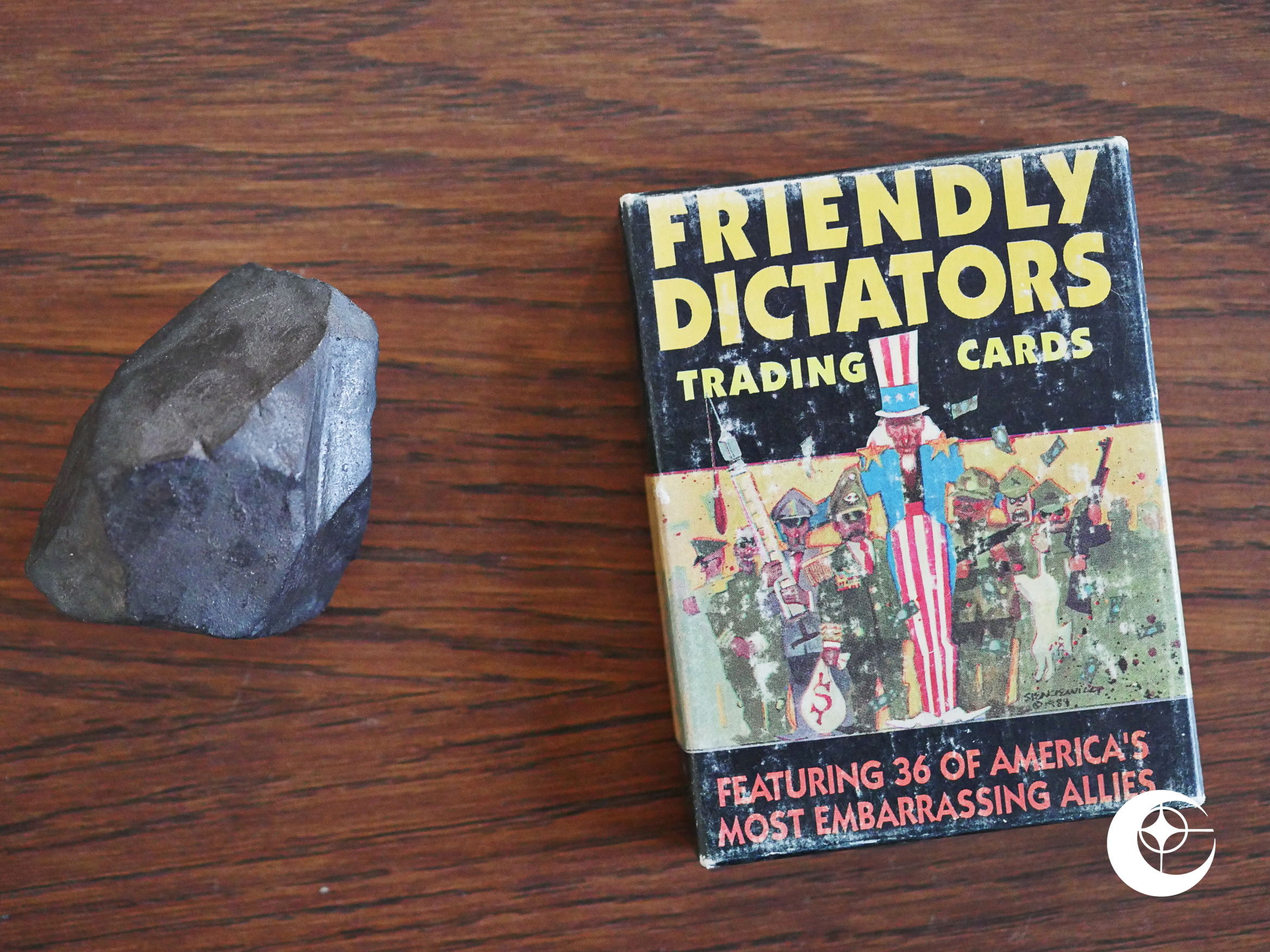
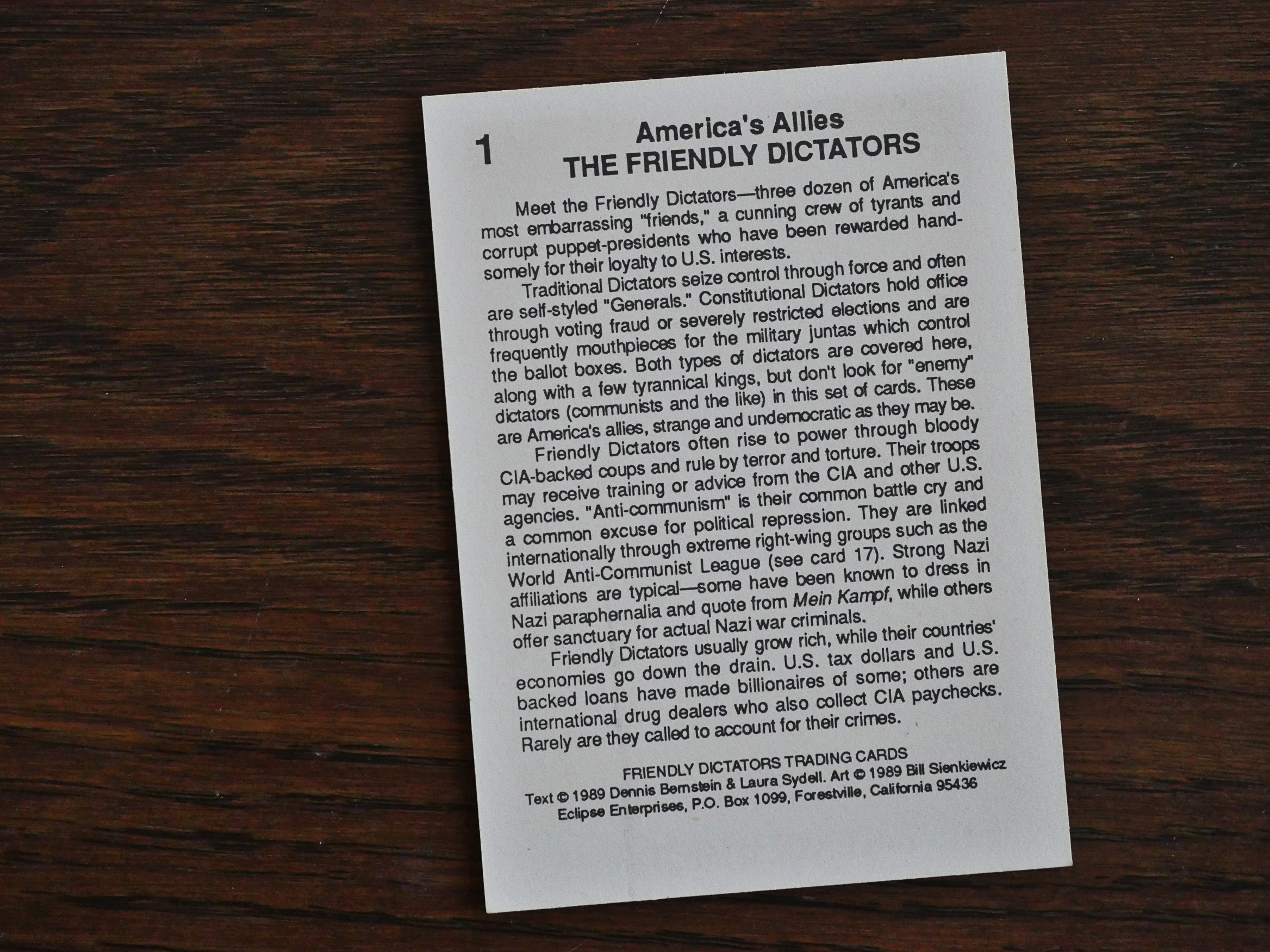
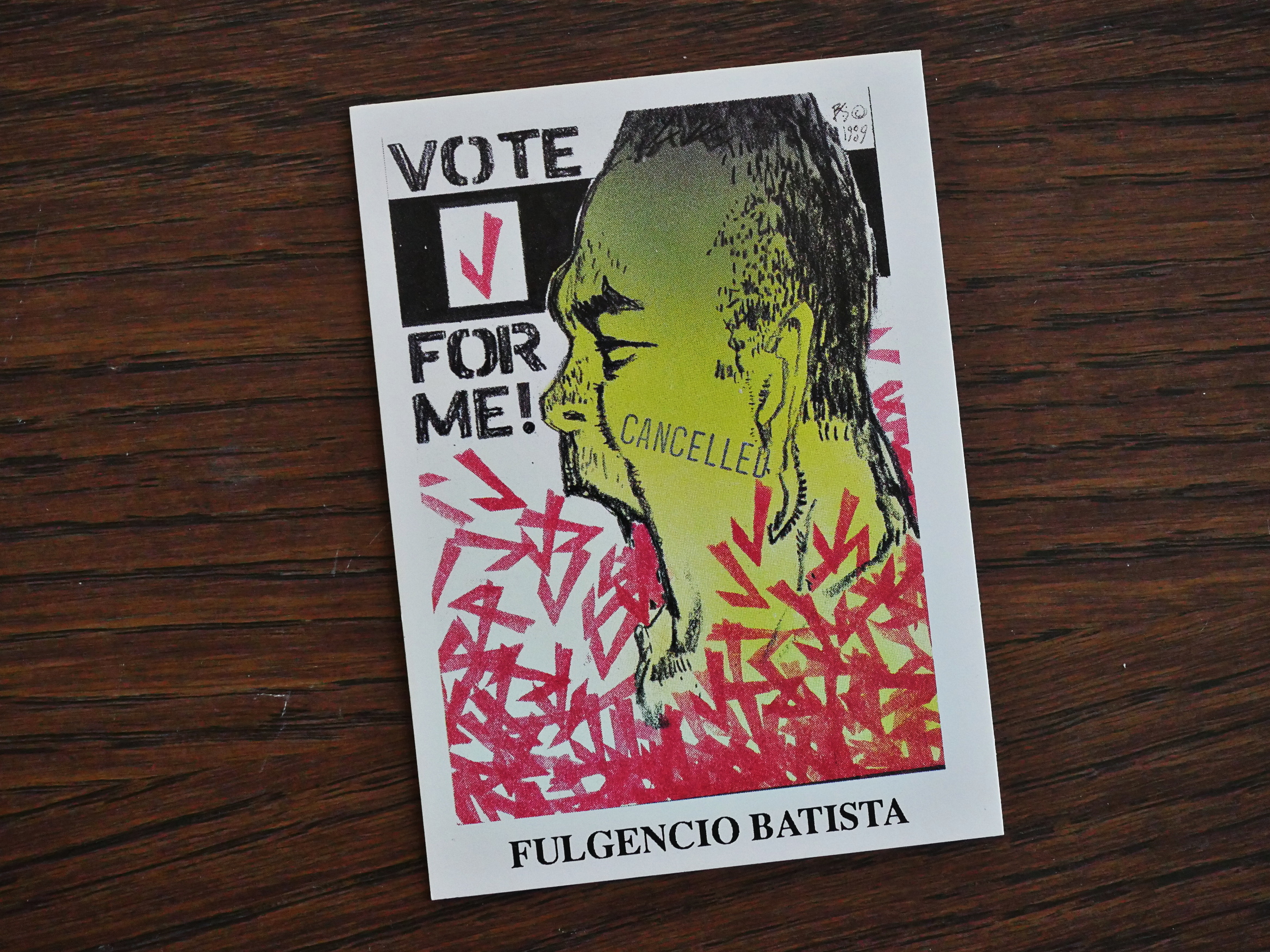
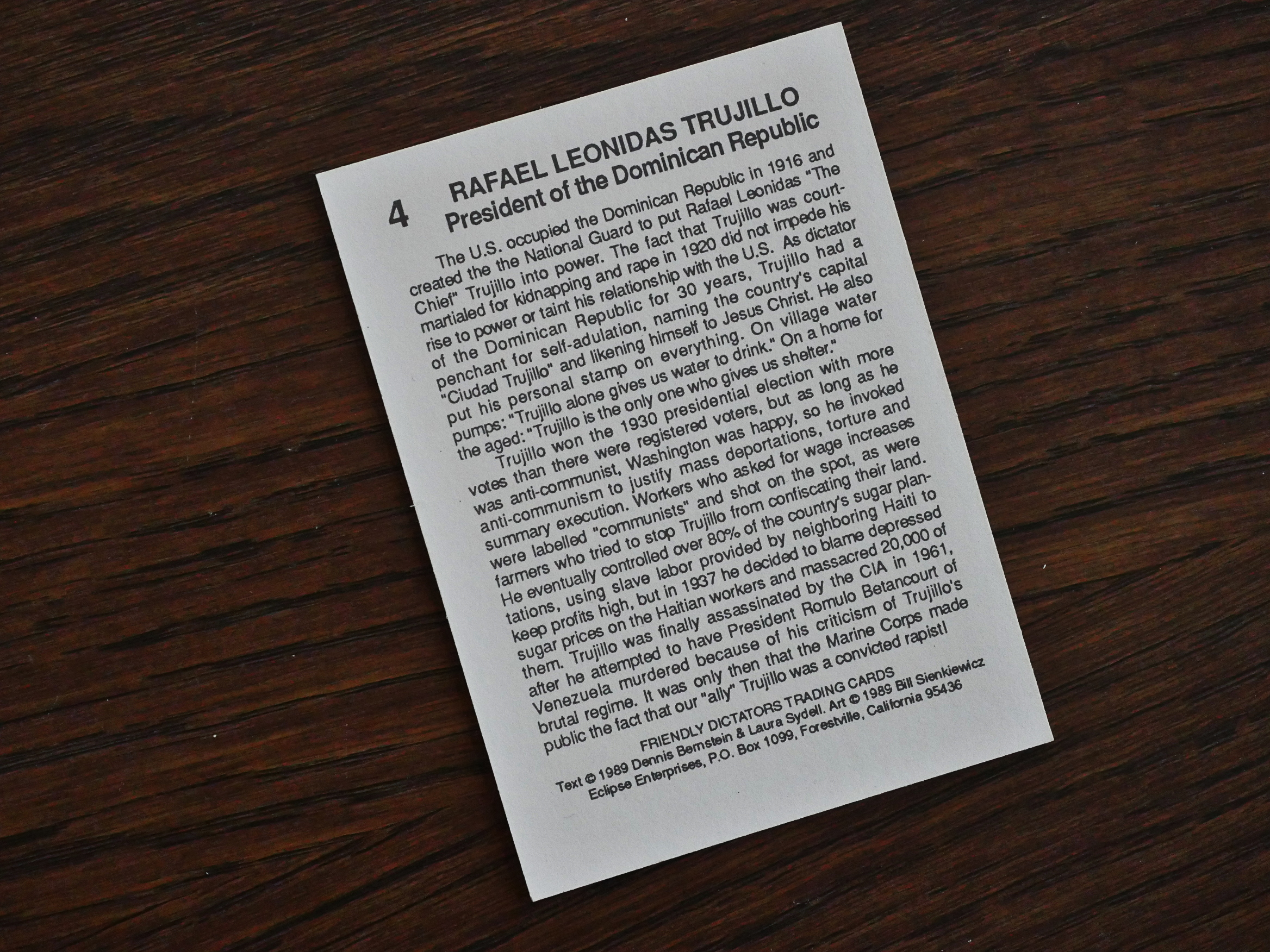
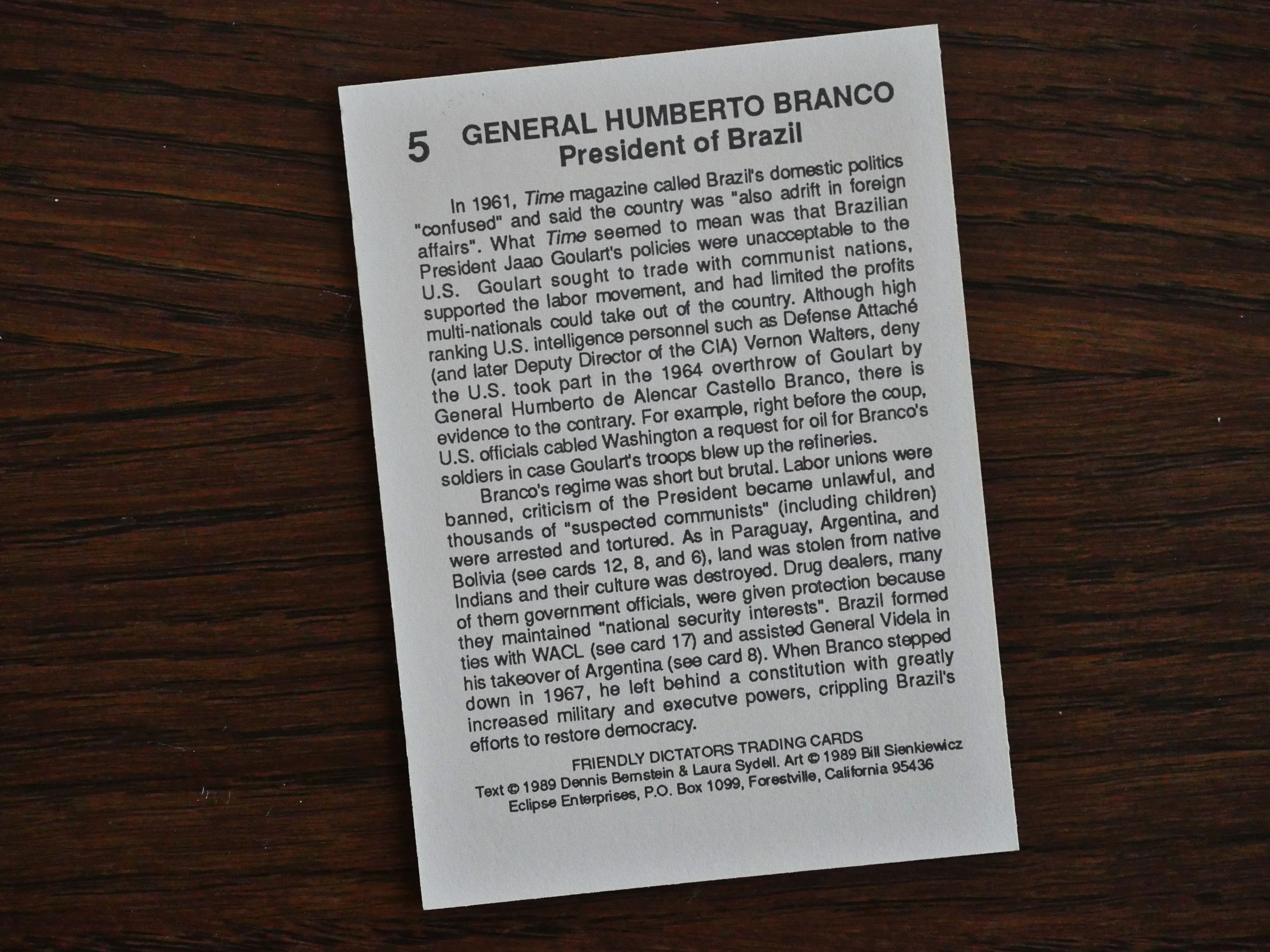
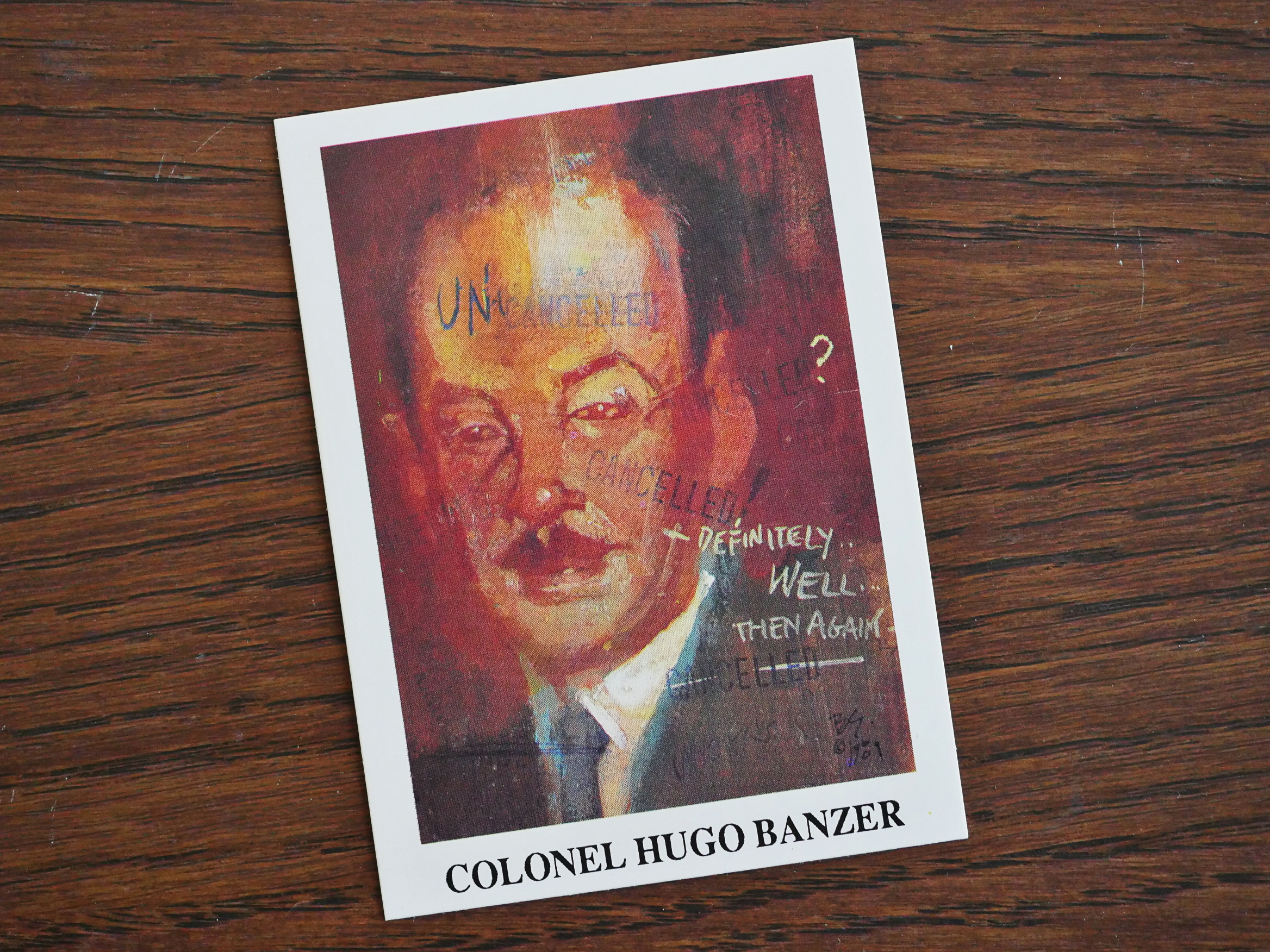
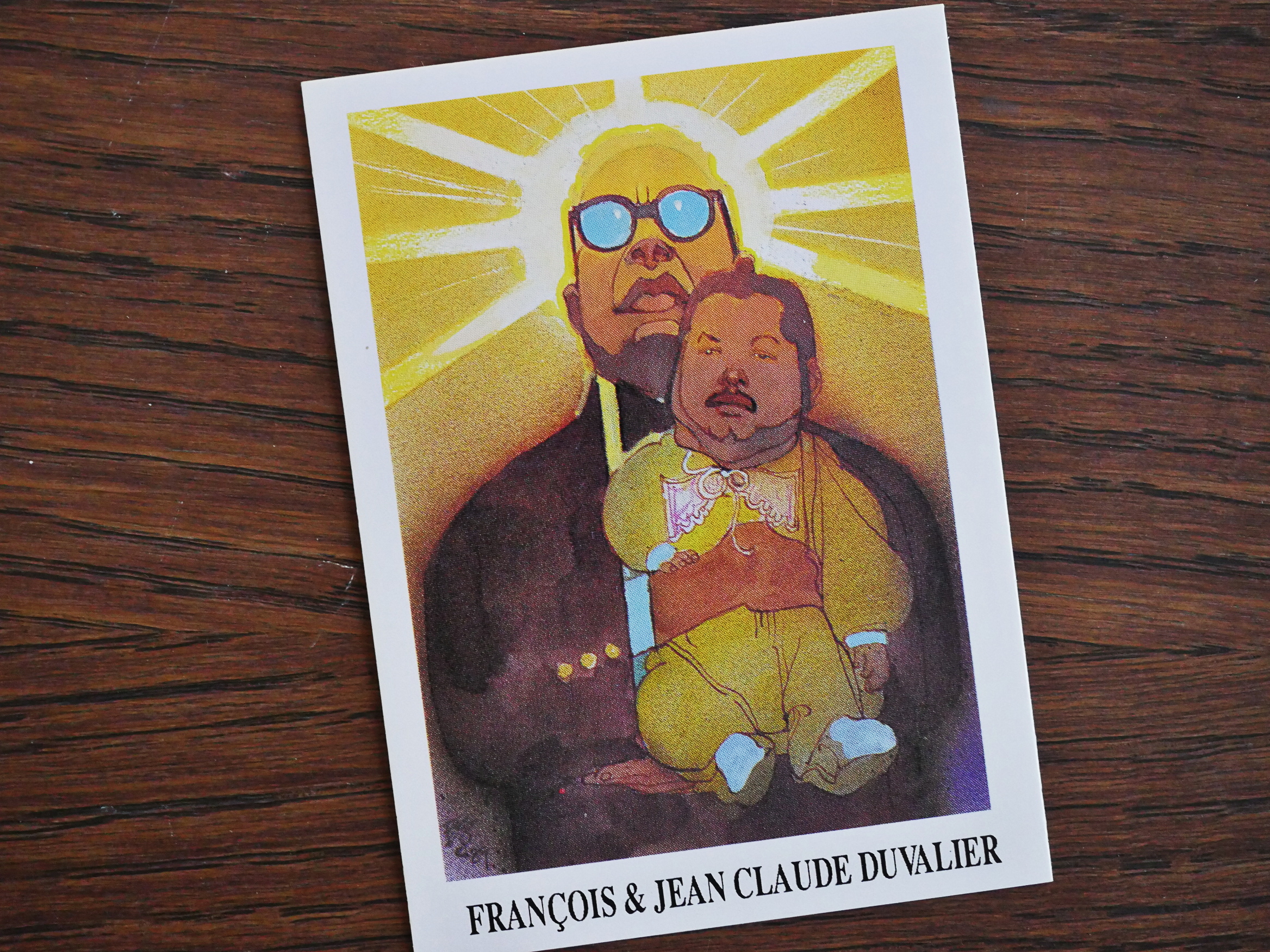
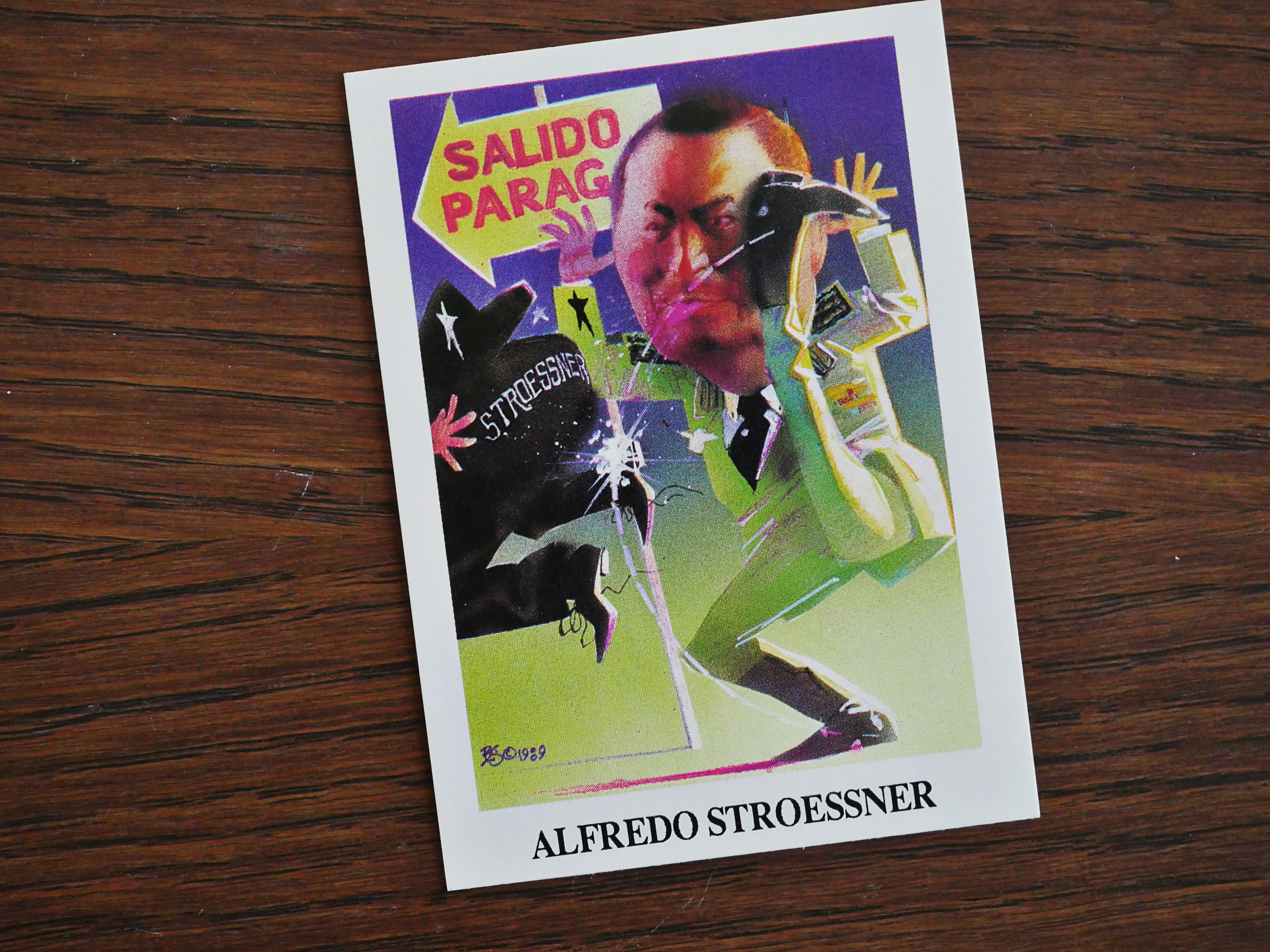
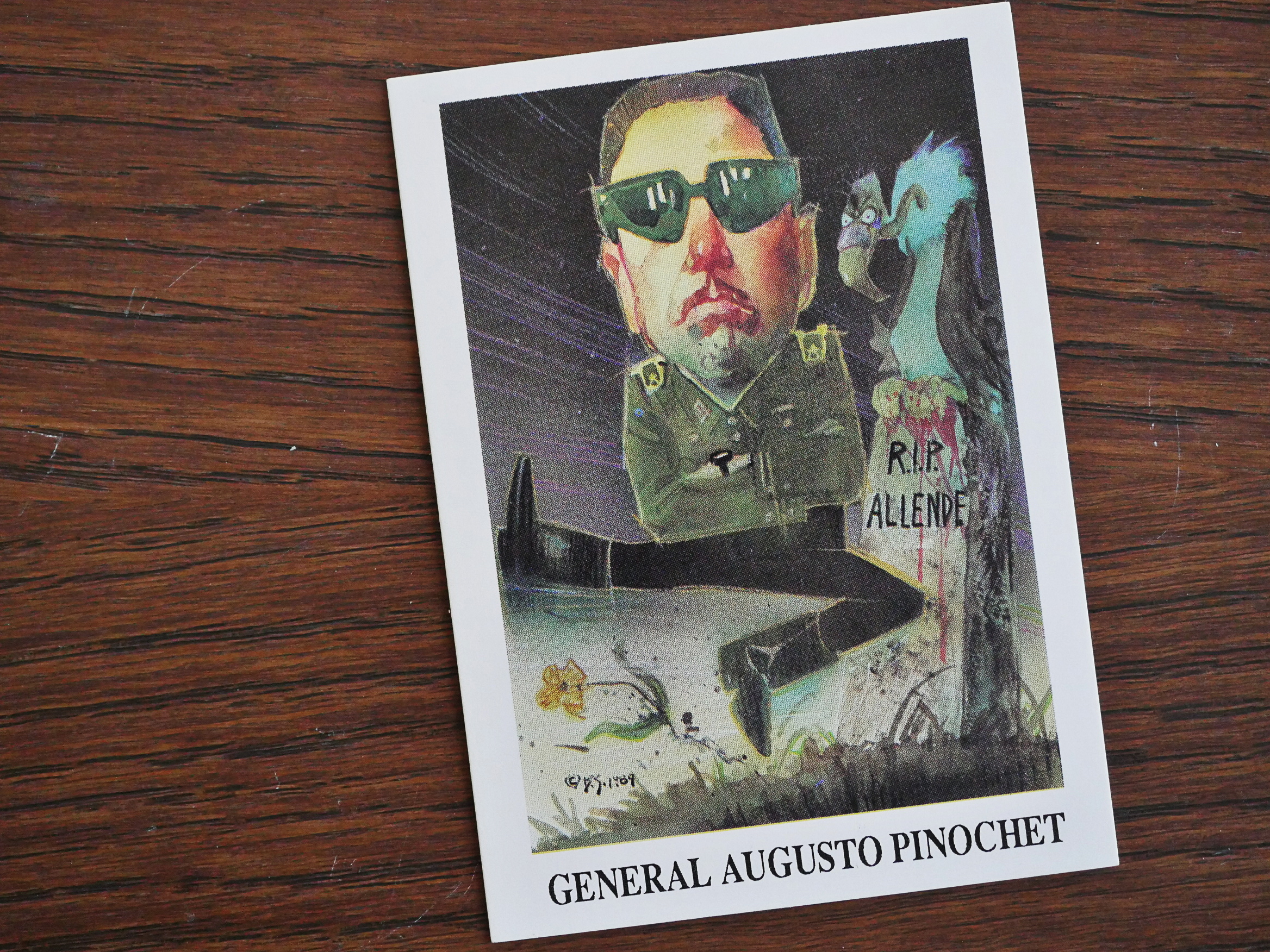
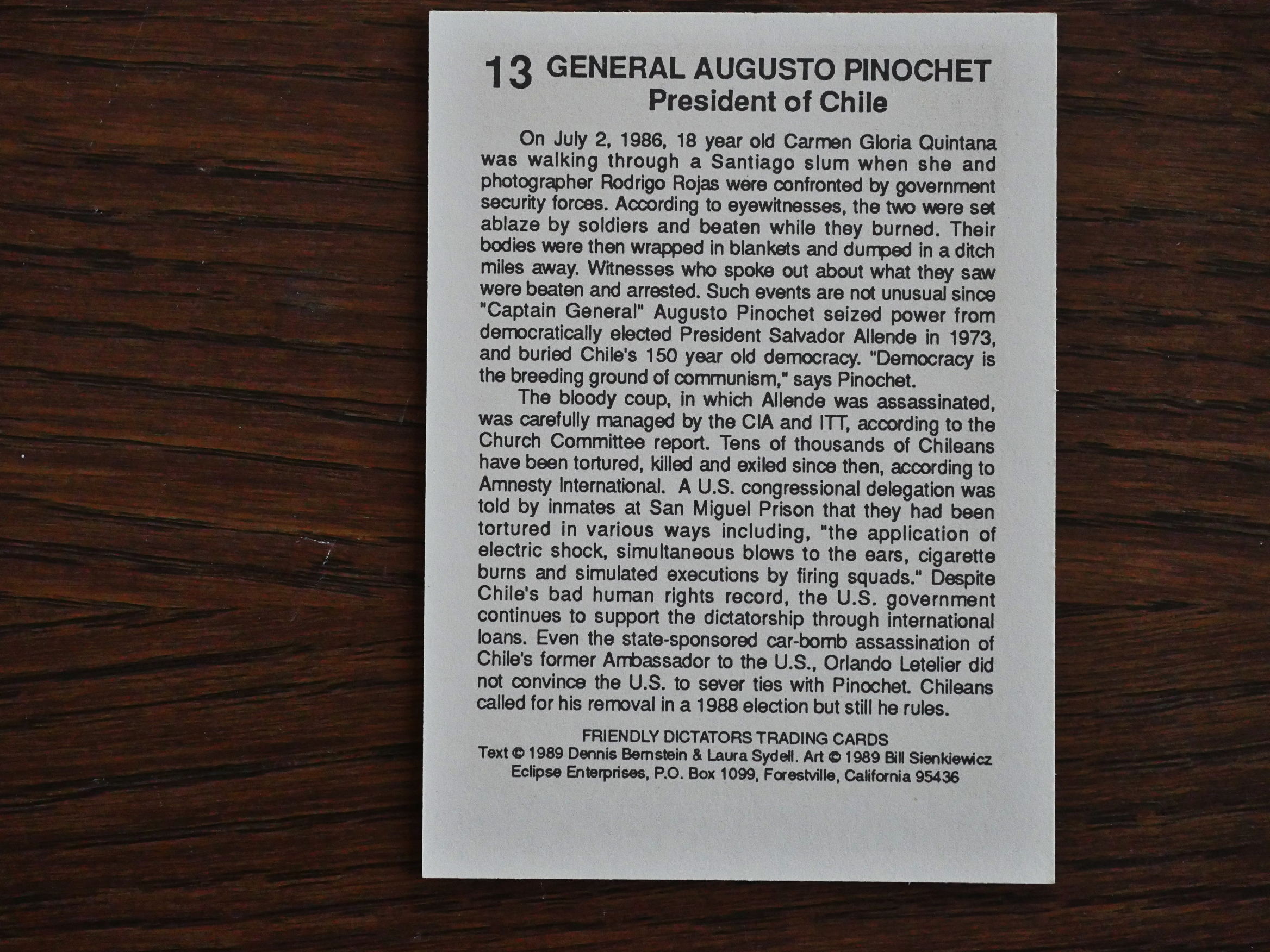
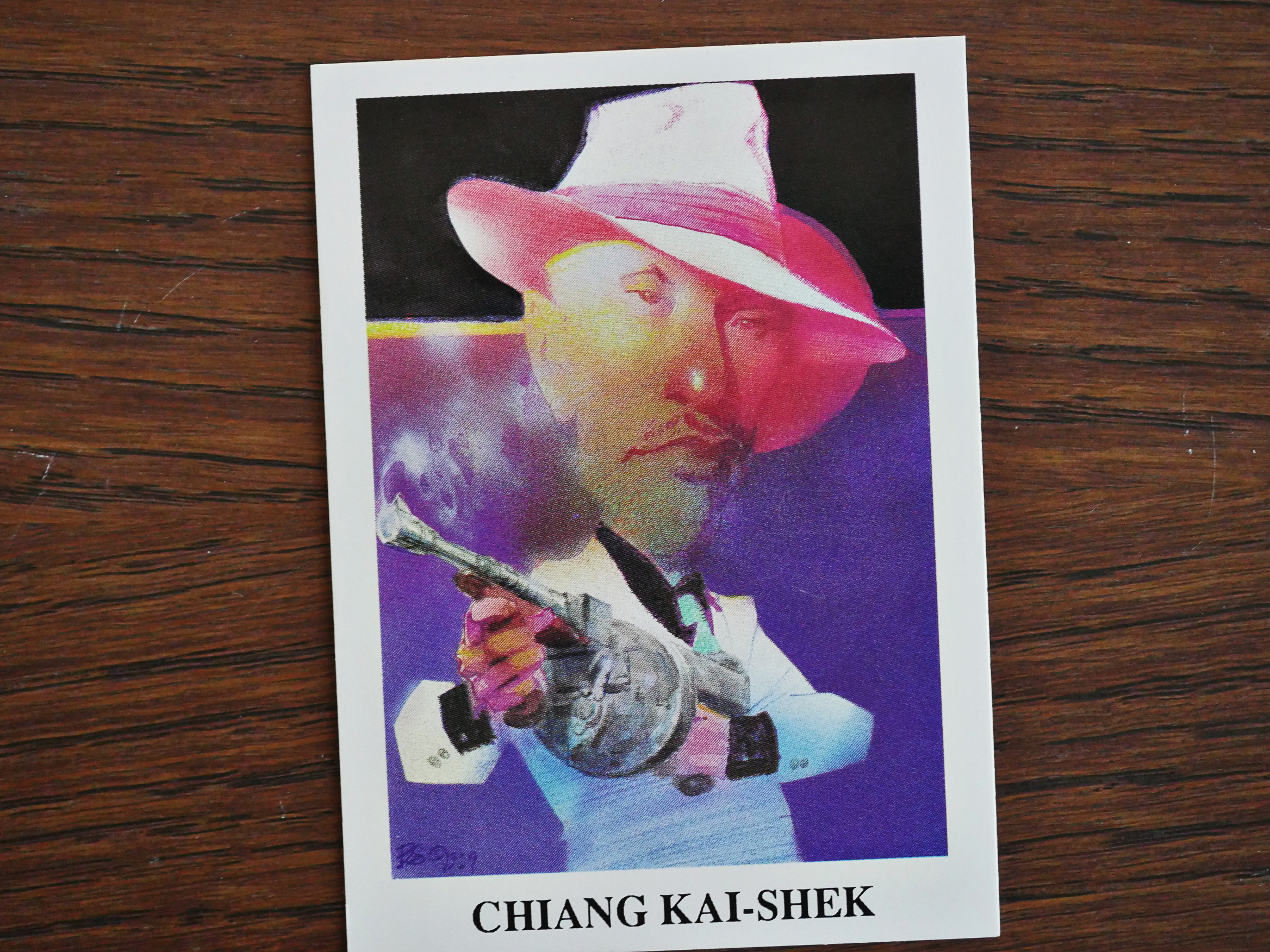
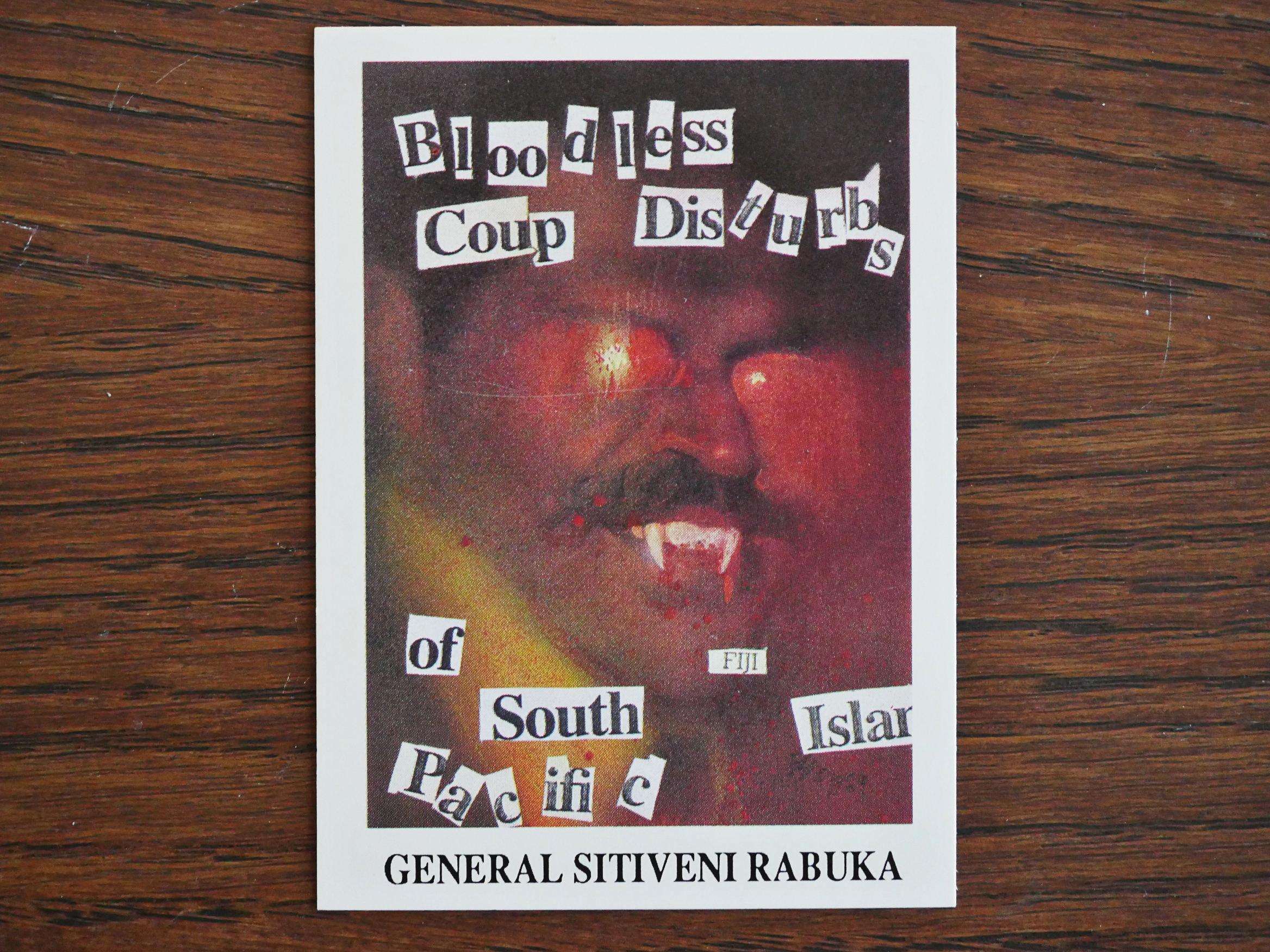
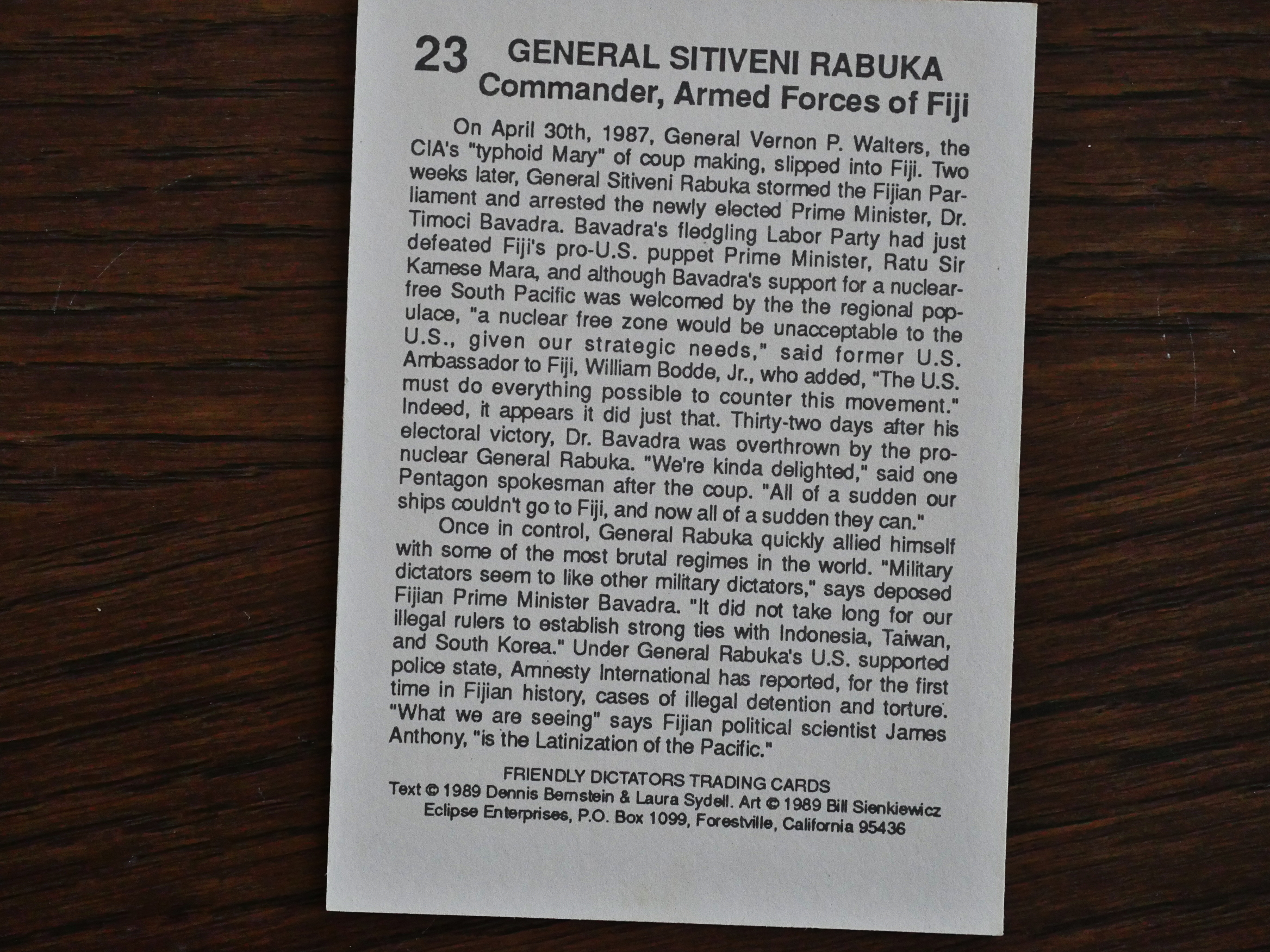
Wow. I definitely learned a lot reading these cards. All I can say is our government, particularly the CIA, should be BEYOND grateful that so many of their criminal actions abroad are still not common knowledge to the general American public because I’d like to think the collective outrage would be huge. Of course I could be wrong, especially given how much apathy is the current sentiment towards these kinds of things.
Pingback: sdsu.edu